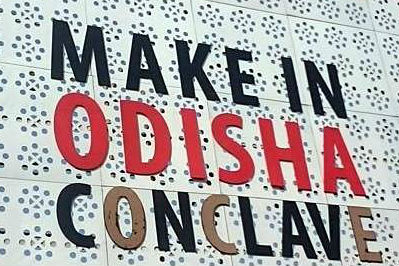The countdown for the high-profile ‘Make in Odisha’ conclave has started. This is the second edition of the biennial event. With less than three weeks remaining for the marquee event, the state government has unleashed a campaign in national media to make it successful. These are certainly feverish times for the state government. The conclave will be immediately followed by the Hockey World Cup.
The ‘Make in Odisha’ initiative may not be identical with the ‘Make in India’ programme, but is similar to it. The conclave will provide a platform for the state government to showcase its policy and regulatory environment, investment opportunities across focus sectors in the state and the manufacturing opportunities here. With its large pool of educated youths, cheap labour, peaceful lifestyle, relatively easy regulatory framework and, above all, its political stability, Odisha offers an ideal investment destination for industries. Its massive deposits of minerals such as bauxite, chromite, iron ore, manganese and limestone make the state an ideal destination for mineral-based industries. Odisha accounts for 28 per cent of the country’s total iron ore deposits, while coal reserves work out to 24 per cent, bauxite to 59 per cent and chromite to 98 per cent. Despite such natural bounty, the state has not yet achieved its rightful place in the community of states. A late starter, Odisha has a lot of catch-up to do. Efforts by the government to step up pace of industrialisation have delivered mixed results. For Odisha to solve its employment challenge, it needs a big push in manufacturing. And this may not be confined to minerals-based industries in general and steel-making in particular, only. This is why the fate of the coming ‘Make in Odisha’ conclave is crucial. The first edition of the conclave in 2016 was not very successful in this respect, no matter what the government may claim. It had attracted investment intent of Rs 2.3 lakh crore with a potential of generating 1.4 lakh jobs. But the actual investment turned out to be a minuscule portion of that. In a reply to the state Assembly, former industry minister Debiprasad Mishra had said the government received just 28 proposals that added up to an investment of Rs 18,434 crore. These projects together promised creation of 27,565 jobs.
An overwhelming interest by the state government for steel and mineral-based industries over last few decades has not yielded big dividends in terms of jobs. It is expected that the government should look beyond minerals and train its focus on sectors such as agri-based industries, food-processing, telecom and mobile technologies, health and education, among others. Service sector should also get its pride of place in the government’s scheme of things. A study by the ministry of commerce shows that some of the success stories of ‘Make in India’ could be more optics than concrete gains. The state government should guard against this eventuality.
